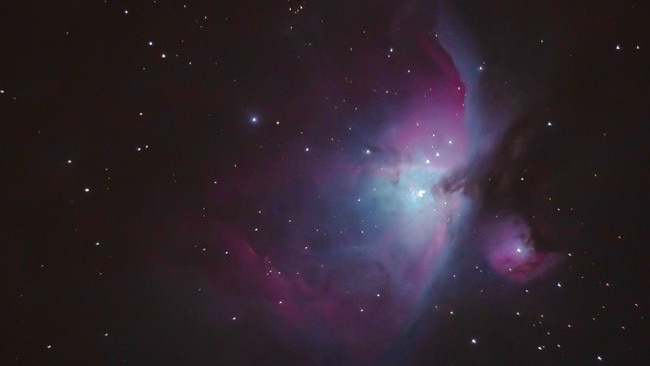Mackay stargazer shares best tips to explore galaxies
Self-proclaimed ‘nerd’ Scott van der Linden shares how you too can photograph the galaxy, planets, moons

Mackay
Don't miss out on the headlines from Mackay. Followed categories will be added to My News.
A PHOTOGRAPH taken by a self-proclaimed "nerd" in a Mackay backyard captures the birthplace of baby stars 9000 light-years away from planet Earth.
It is the Trifid Nebula in the constellation of Sagittarius discovered by Charles Messier more than 250 years ago.
Rural View resident Scott van der Linden said his childhood passion for astronomy was reignited in his 30s after discovering telescope prices had dropped.

He said for $100-$150, anybody could buy a "decent" telescope capable of spotting planets including Venus, Mars, Jupiter and his favourite, Saturn.
More stories:
Mackay club to crystallise your gemstone interest
Astronaut commits 'first crime in space'
The night dad and I 'flashed' a history-making astronaut
"All the other (planets) look like a ball," Mr Linden said.
"Saturn just looks so cool, you can see the rings going around it and a couple of moons."
Jupiter and Saturn each had about 70 moons, he said.

"One of Saturn's has got an atmosphere and it might have water.
"Jupiter's got one which is icy, another is covered with sulphur and its got volcanoes.
"Jupiter's got four main big moons that are easy to see even with a small telescope."
And right now was the best time of the year to see the two planets from Mackay, Mr Linden said.
"Because they're around our side of the sun at the moment, they're brighter and they actually look bigger."

He said there was also a chance to spot Comet Neowise over the coming weeks.
"Comets are a ball of rock and ice going through the solar system … in close past the sun," Mr Linden said.
Interested skygazers could use smartphone apps like Skyguide and Stellarium to show where constellations, planets and also the International Space Station were located at any given time, he said.
They can also check out the Facebook groups Mackay Skywatchers and Astronomers and Tropical Stargazers.

Subscriber benefits:
WATCH: Your guide to reading the Daily Mercury online
Your questions about the new Daily Mercury format answered
How to make the most of your Mercury subscription
Daily puzzles and Sudoku another reason to stay subscribed
We're still here: How to contact your journalists
Scott van der Linden's tips for skygazing over the next few days:
- In the mornings, Jupiter will rise about 5.20am and Saturn about 5.50am in the west and in the east, Mars will rise first, followed by Venus and Earth's moon.
- In the evenings, Mars will rise just after 11pm in the west.


